Masters 2019: Hole-by-hole course guide to Augusta National
From the 1st to the 18th hole – there are no easy wins

Your support helps us to tell the story
From reproductive rights to climate change to Big Tech, The Independent is on the ground when the story is developing. Whether it's investigating the financials of Elon Musk's pro-Trump PAC or producing our latest documentary, 'The A Word', which shines a light on the American women fighting for reproductive rights, we know how important it is to parse out the facts from the messaging.
At such a critical moment in US history, we need reporters on the ground. Your donation allows us to keep sending journalists to speak to both sides of the story.
The Independent is trusted by Americans across the entire political spectrum. And unlike many other quality news outlets, we choose not to lock Americans out of our reporting and analysis with paywalls. We believe quality journalism should be available to everyone, paid for by those who can afford it.
Your support makes all the difference.Augusta National is arguably the most famous golf course in the world apart from St Andrews with the Masters arguably the most hotly anticipated major tournament.
Its lush fairways, flower-filled walkways and siren-like greens make this a course as beautiful as it is treacherous.
For 84 years, Augusta’s 18 holes have collected reputations and scalps making its heritage another obstacle for competitors to overcome.
The three holes of ‘Amen corner’ (11th, 12th, 13th) have killed many strong leads, most famously Greg Norman in 1996 and Jordan Spieth in 2016.
In the following guide, we help you to understand the challenges each hole poses for the players from well-placed bunkers, sloped greens and catch-all water hazards.
The ranking below rates each hole based on scoring from every Masters from 1934 to the present day (1 being the hardest and 18 the easiest).
So let’s dig in:
Hole 1 (Tea Olive)
Par 4
445 Yards
Ranking: 6

Tea Olive is the 6th hardest hole explained to some extent as it is the opening hole of a pretty nerve-wracking round.
However, it has to be said this slight dog-leg right (dog-leg is a hole which bends either left or right to varying degrees) is devilish in its own right.
The tee shot is not a pleasant one- Pros have to be very wary of the trees on the left with an hardcore alternative of carrying the ball 310 yards over the right fairway bunker.
Many pros will choose rather to downgrade to a 3-wood and hit alongside the bunker to play safe.
If a player takes the safe option they will face an 8-iron into a large, undulating green with a sloping front-right edge and a catch-all front-left bunker.
Hole 2 (Pink Dogwood)
Par 5
575 Yards
Ranking: 16
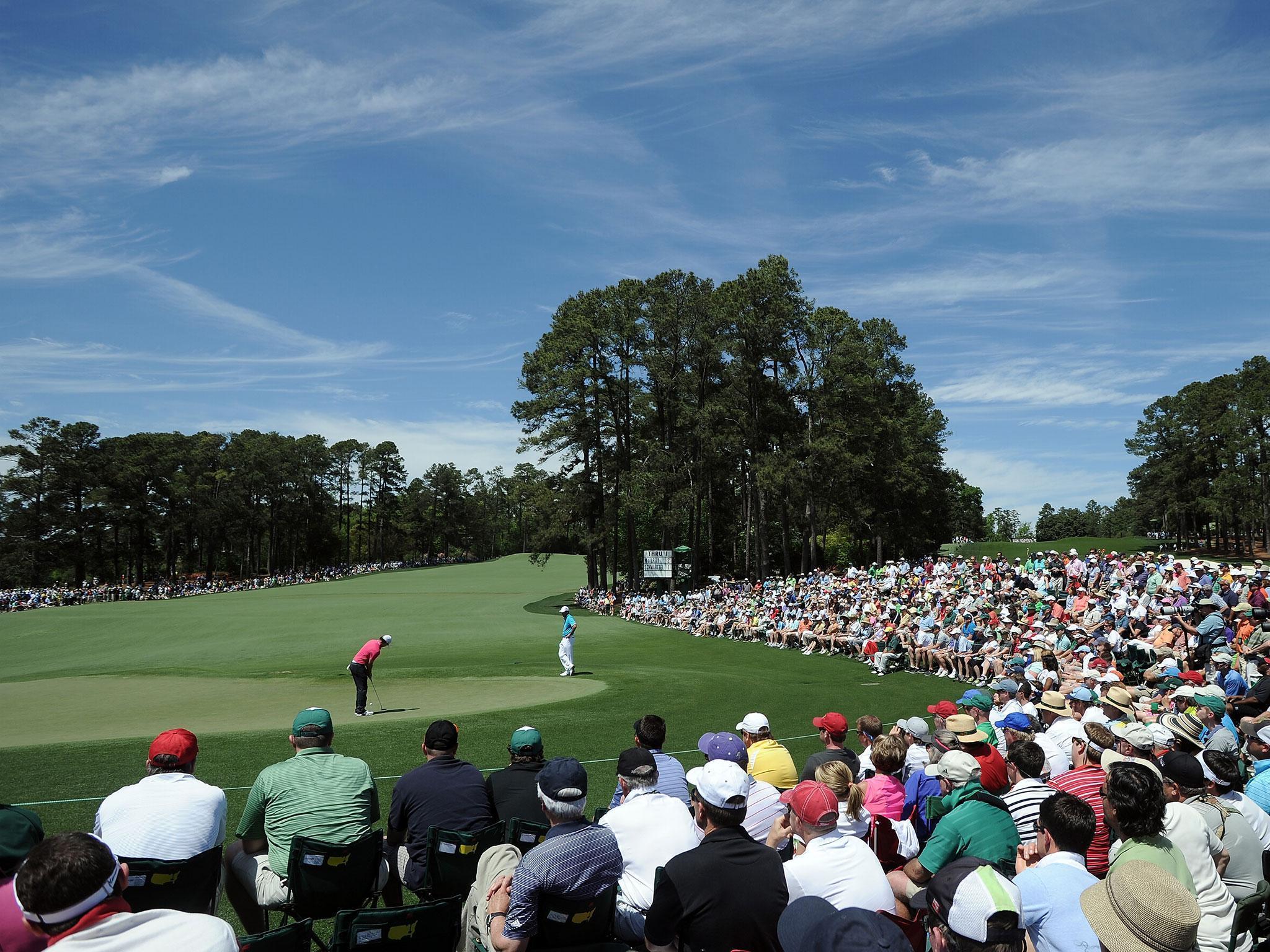
This dog-leg left has a green reachable in two. Carrying the right fairway bunker after the hole was elongated is no longer a real option with most looking to drive the ball on the left hand side of the left-hand side of the bunker.
The second shot into the green is a big shot with the option of laying up, intentionally entering the one of the two front-side bunkers or attempting a landing on the green.
A definite birdie opportunity- Louis Oosthuizen somehow pulled off an albatross in 2012 by holing a 257-yard approach shot with a 4-iron.
Hole 3 (Flowering Peach)
Par 4
350 Yards
Ranking: 14
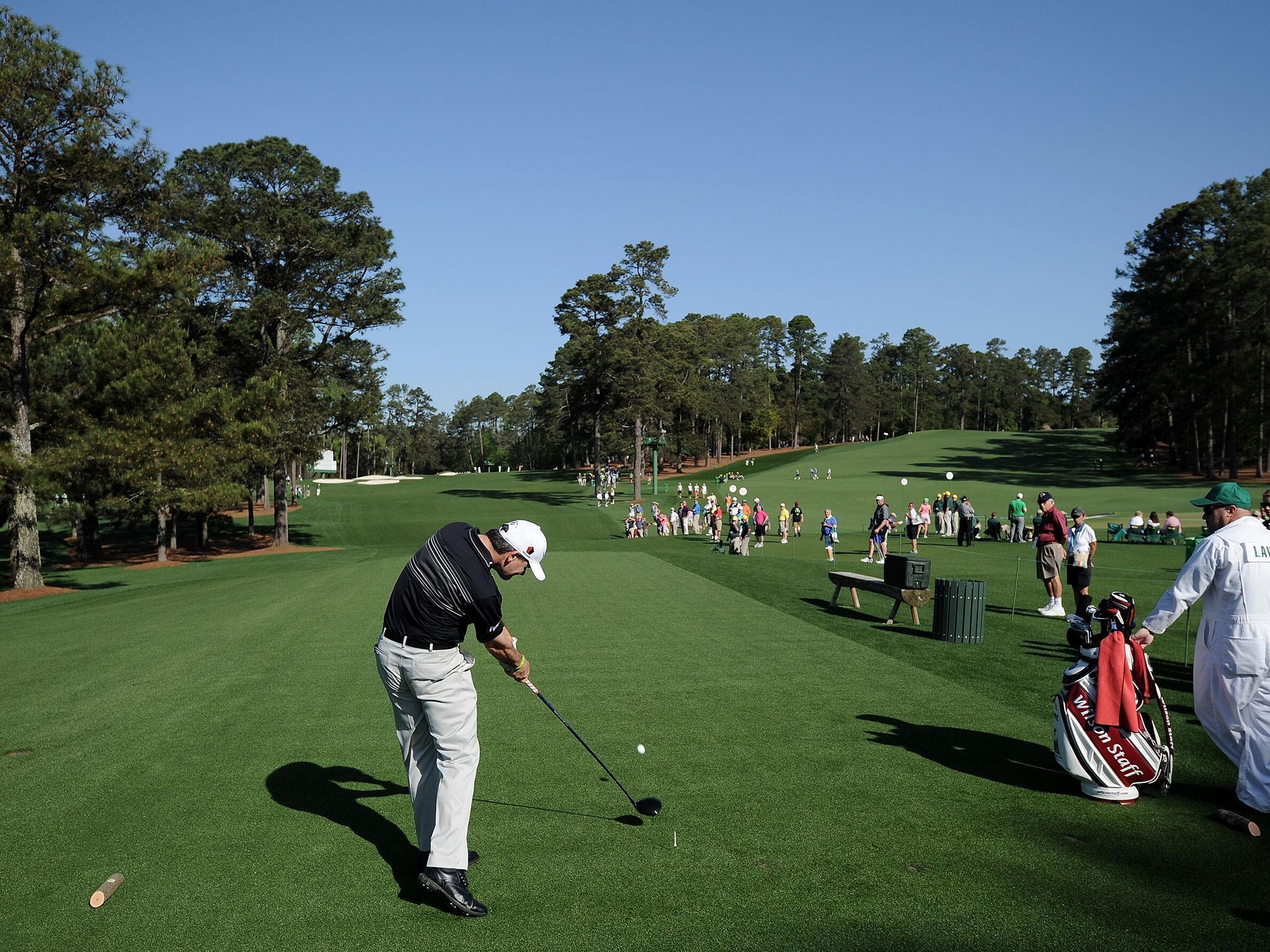
An uphill short part 4 armed with a number of very well placed bunkers. The confident driver will shoot for the green courting the trees on the right.
The safe tee shot is a long iron just short of the four bunkers guarding the left of fairway.
The L-shaped greed slopes right to left into a gaping bunker – you don’t want to be putting down this slope.
Hole 4 (Flowering Crab Apple)
Par 3
240 Yards
Ranking: 4
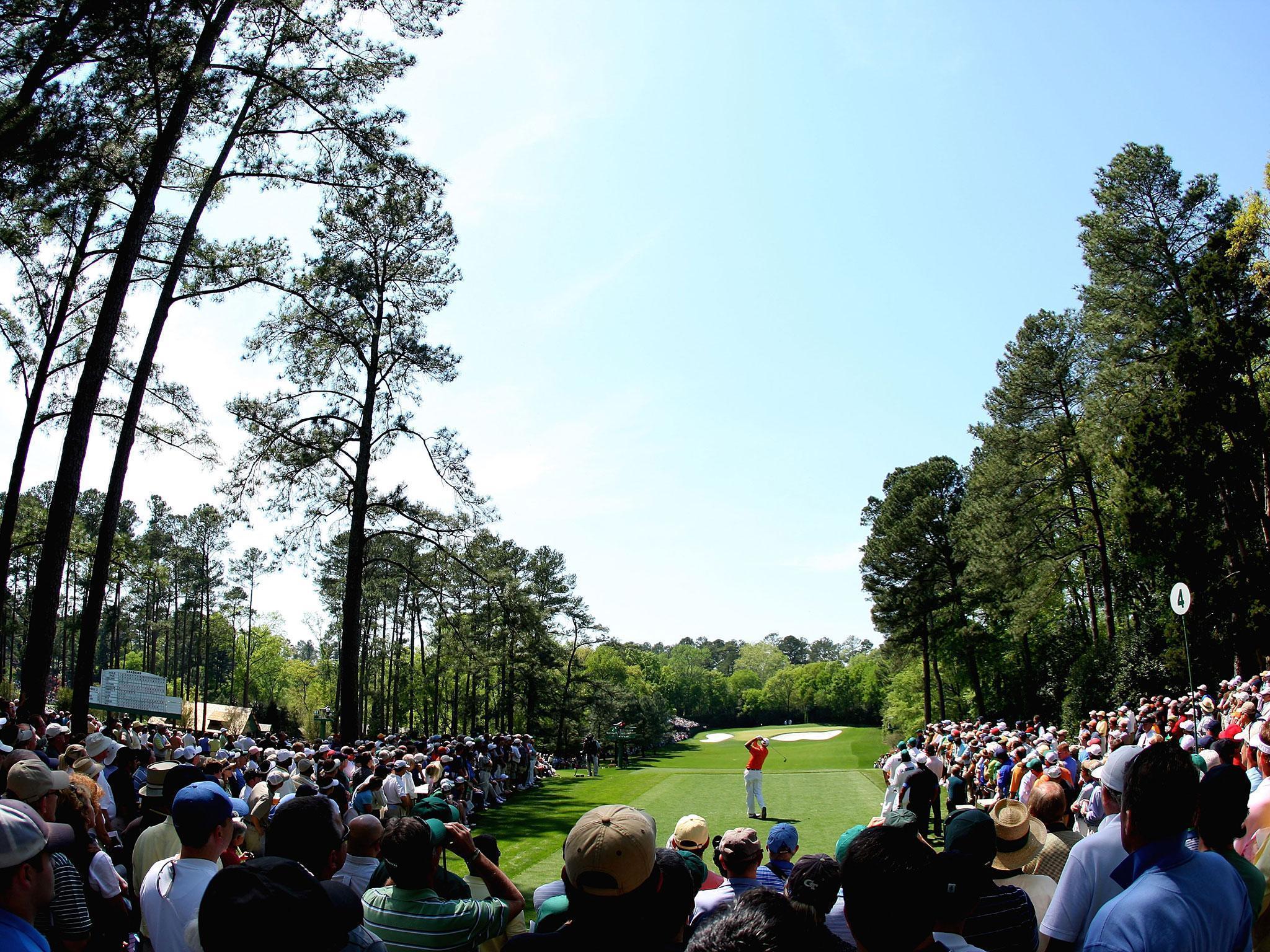
This hole is susceptible to the wind and can force a player to dramatically changes clubs within a matter of seconds before a tee shot.
The likes of Tiger Woods have gone from hitting a 5-iron to a 3-wood in attempting to reach the green.
The two bunkers flanking the front of the green are to be avoided as the multi-tiered green does not make an easy landing.
Pin position and wind will dictate the cautious pro’s tee shot.
Hole 5 (Magnolia)
Par 4
495 Yards
Ranking: 5
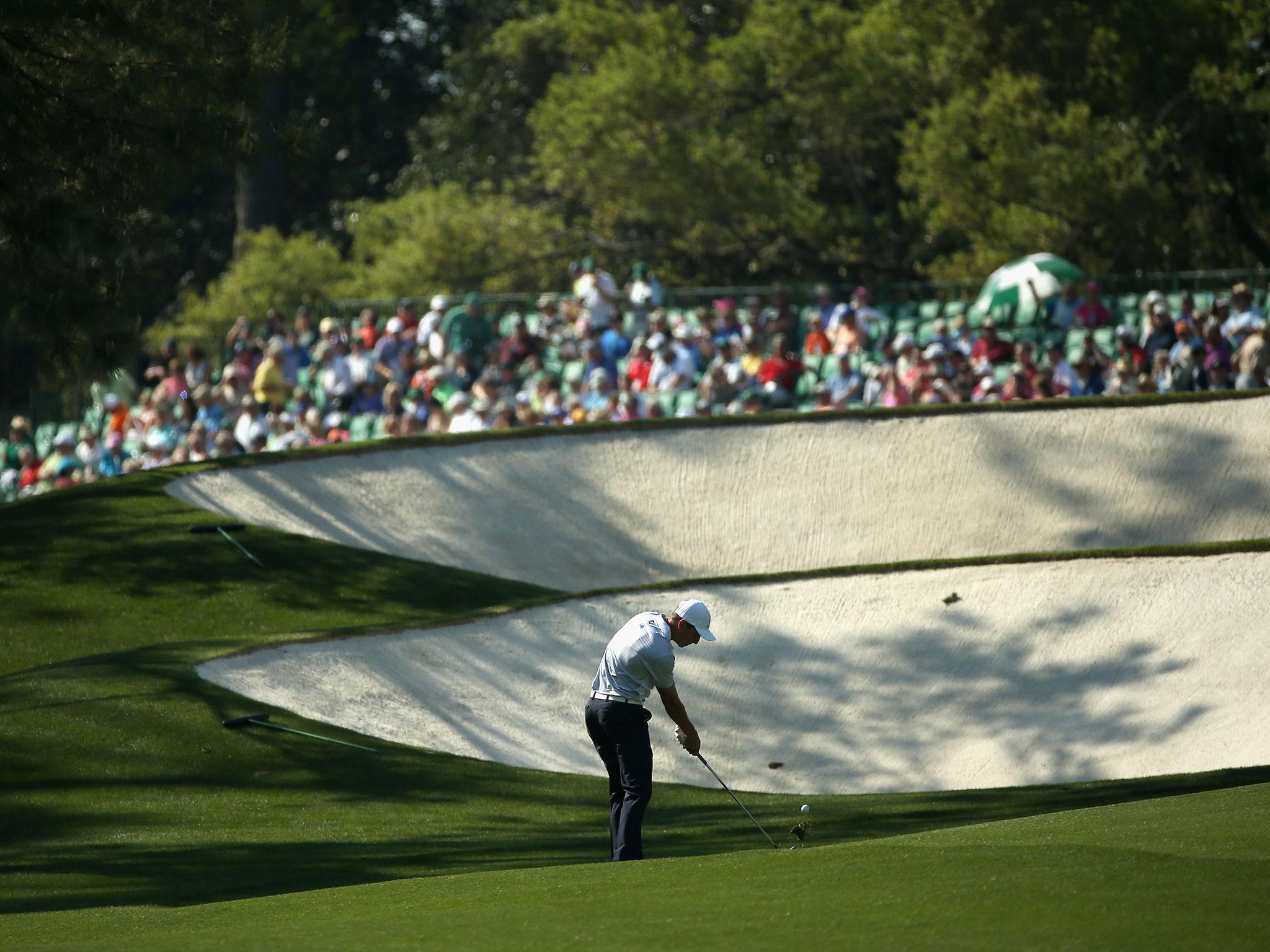
This slight dog-leg left has a fairway that slopes from right to left, while the bunkers are now around 350 yards from the tee after the hole was extended by 50 yards for this year's competition.
The drive must also steer clear of the trees to the bunker’s immediate left.
There is a bunker out the back of the green waiting to swallow for long approach shots.
The green slopes down to the front making it sensible to land the ball in the centre and avoid the ball sliding off the green.
Hole 6 (Juniper)
Par 3
180 Yards
Ranking: 13
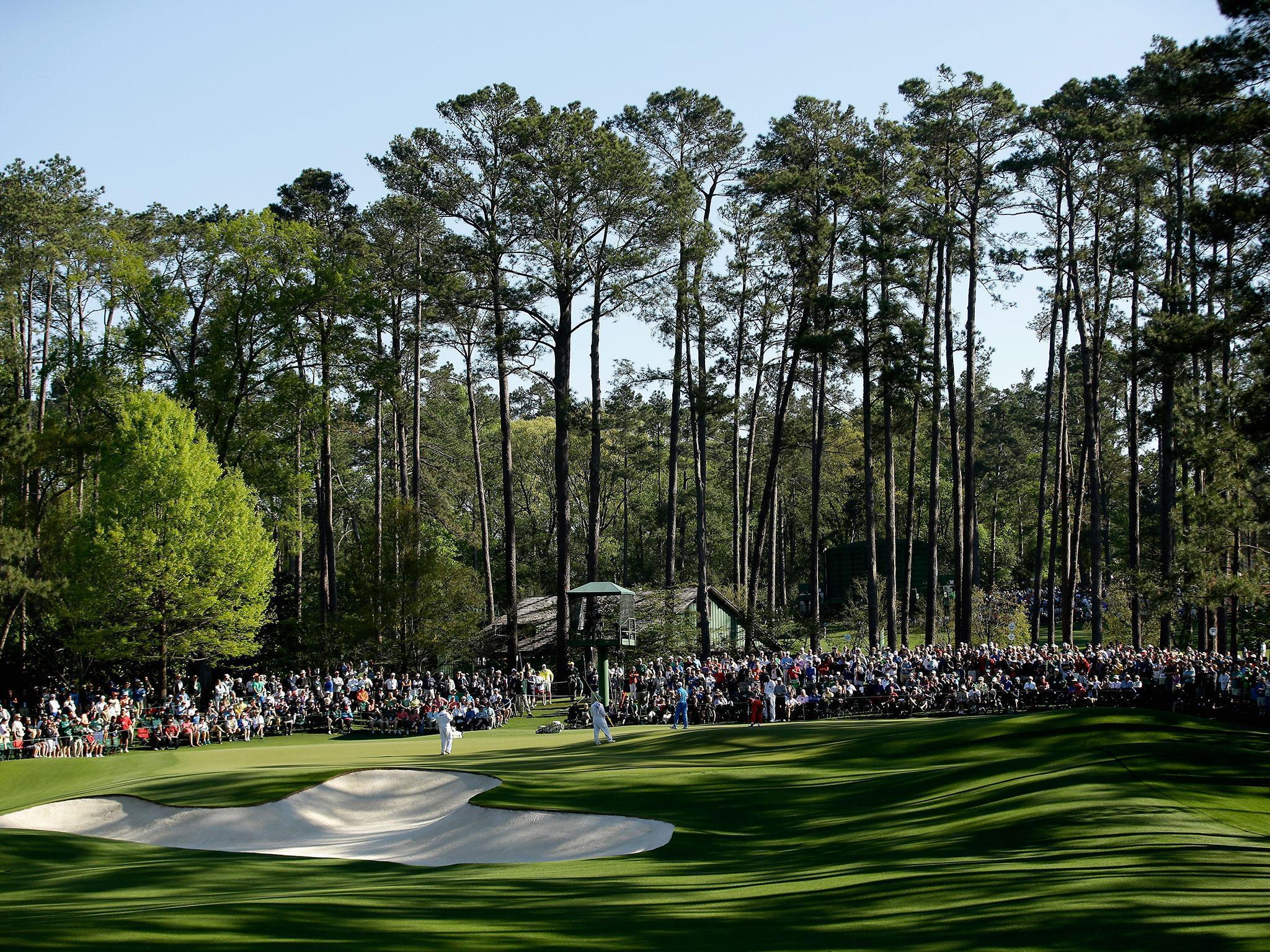
This dramatic par 3 has players aim for the contoured green from an elevated tee.
Choice of club off the tee will depend on the wind or lack thereof.
Guarded by a front-left bunker, the green offers the possibility of hole in ones while also punishing those who hit their shots long.
Hole 7 (Pampas)
Par 4
450 Yards
Ranking: 11

Extended by 120 yards in the last few years – this straight-ish par 4 forces players to hit a drive down a narrowing fairway lined by meddlesome trees.
Never believe the golf cliché that 90% of trees air, just plain wrong, they’re 100% wood and spite.
The green is surrounded by 5 bunkers – more than any other hole.
Hole 8 (Yellow Jasmine)
Par 5
570 Yards
Ranking: 15
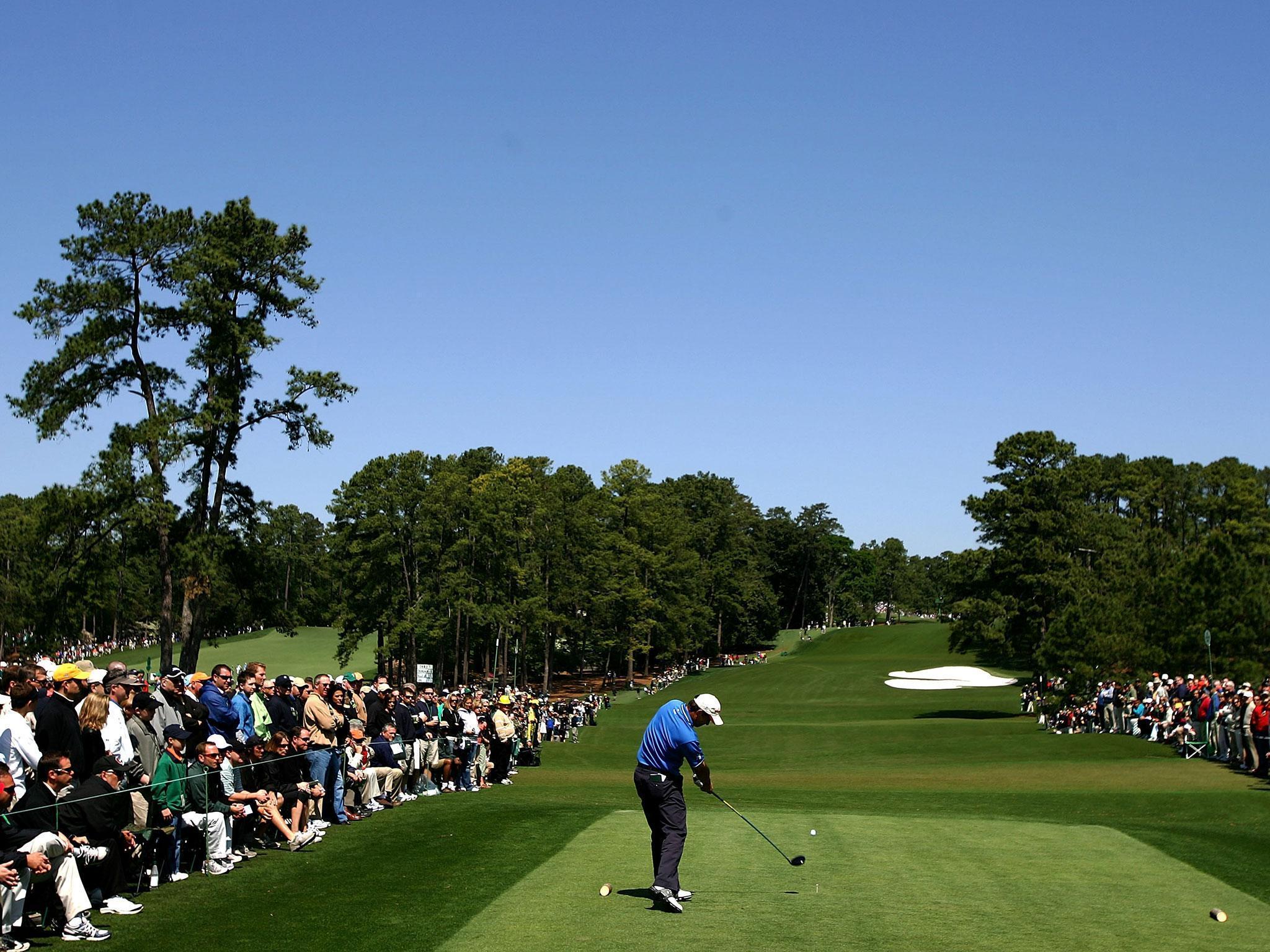
This uphill par-5 is a birdie opportunity, which allows a good drive and subsequent fairway wood to reach the green (wind permitting).
Off the tee, the right fairway bunkers must be avoided without taking yourself on a trip into the woods on the left.
The original humps round the green can derail a long, shallow approach shot with a fairway wood or long iron.
Hole 9 (Carolina Cherry)
Par 4
460 Yards
Ranking: 12

A dog-leg left that takes its players down into a gully then up to a tricky green.
The sensible pro hits their tee shot to the right-hand side of the fairway to put the two left of green bunkers out of play for the approach shot.
The green is notorious for its dramatic back to front slope that can turn a potential par easily into a double bogey…it can prove painful watching.
Hole 10 Camellia
Par 4
495 Yards
Ranking: 1
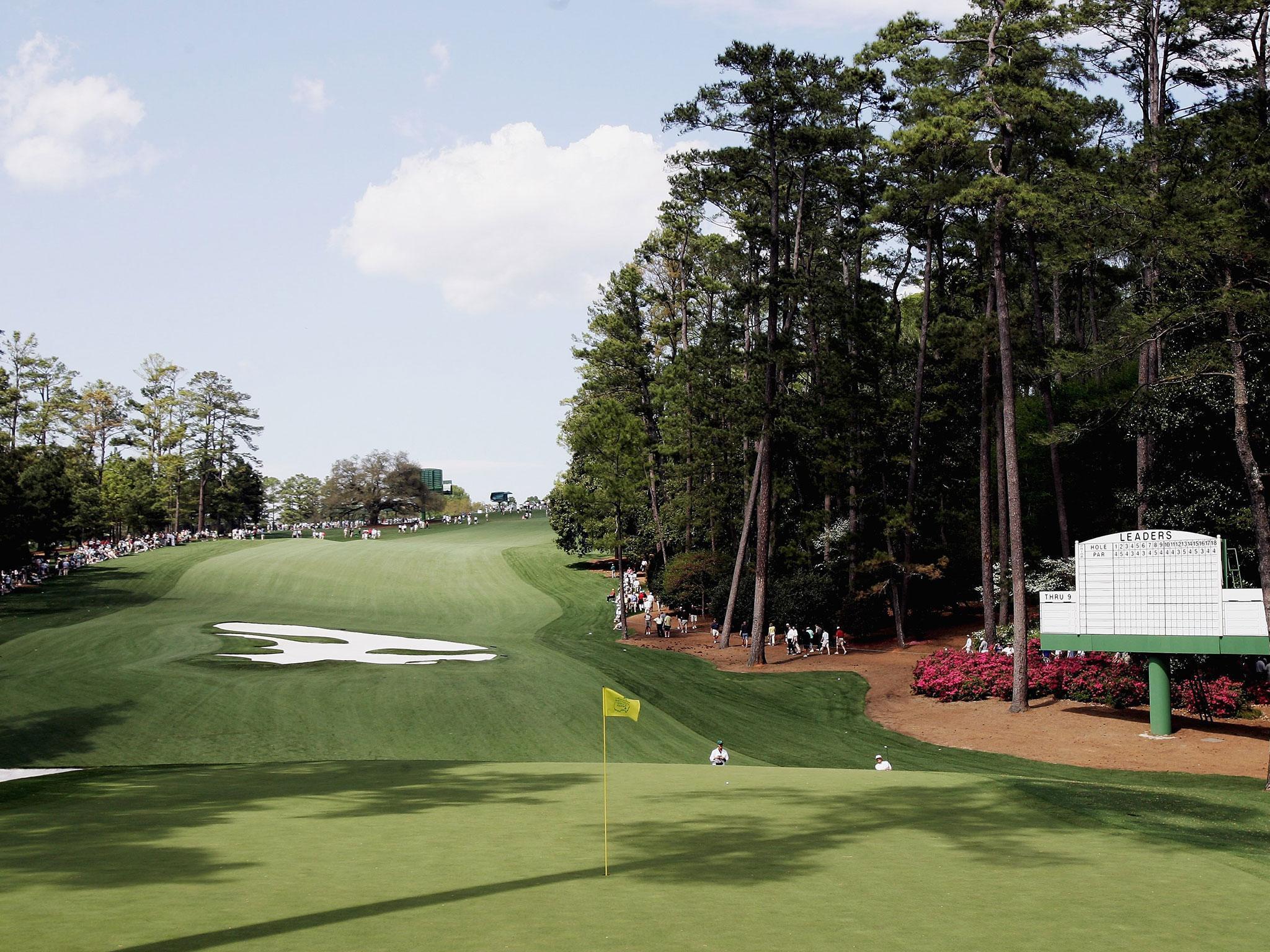
You’re now on the back nine folks, and the 10th (formerly the first hole until 1935) is a doozy.
This long dog-leg left par 4 can be significantly shortened by catching the steep fairway slope towards the green after the apex of the corner.
Unless your name is Bubba Watson, the option of taking a driver off the tee to draw the shot round the corner risks sending the ball deep into the trees.
For many pros a strong three wood is the sensible club selection followed by a mid to short iron into the green. Aiming for the centre of the green is the safe option on statistically the hardest hole on the course.
(Nearly forgot – there is also a 60 yard-long bunker guarding the approach to the green, just for fun)
AMEN CORNER BEGINS
Hole 11 (White Dogwood)
Par 4
505 Yards
Ranking: 2
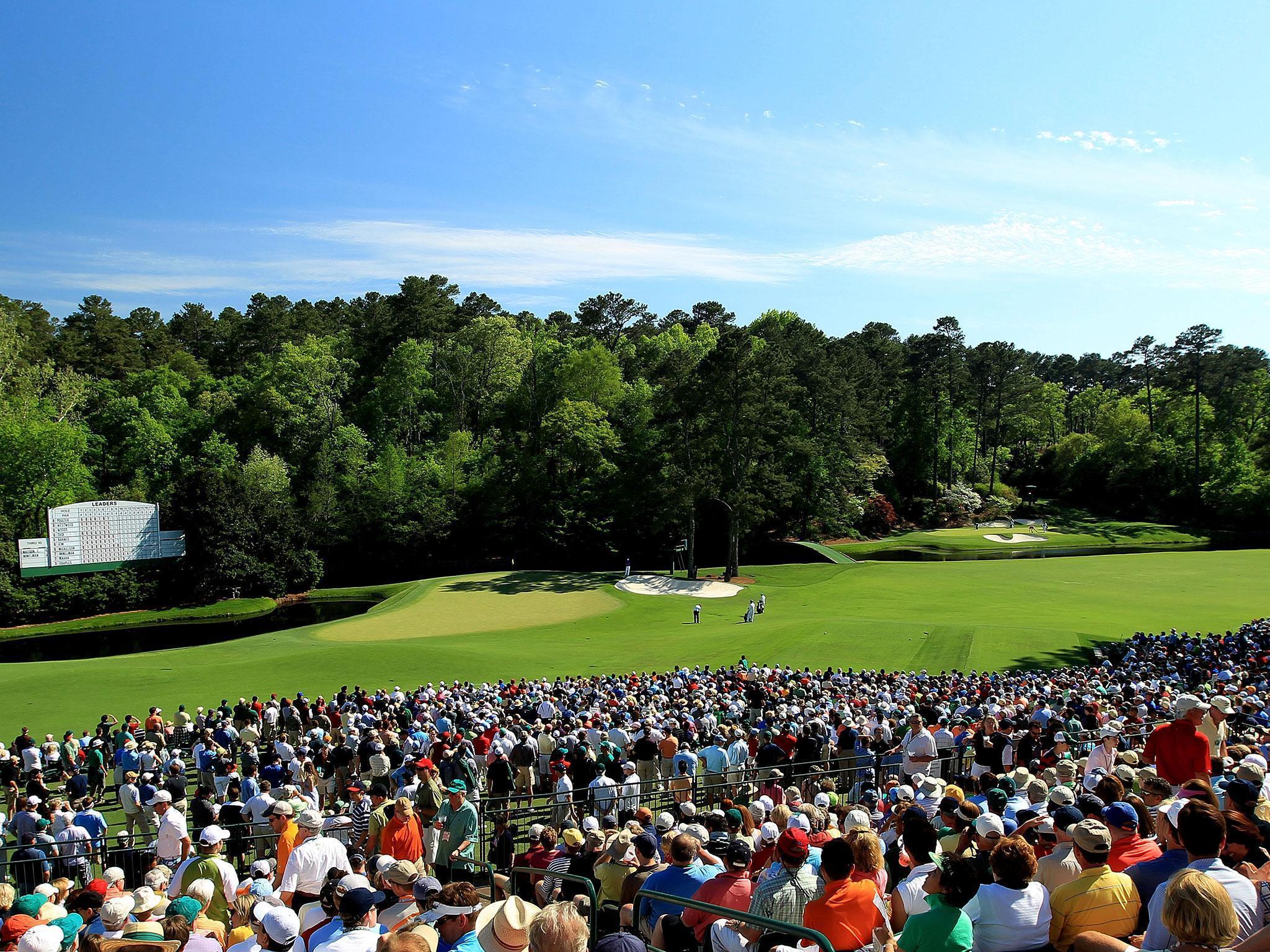
This dog-leg right tests a pro’s nerve especially in later rounds.
For a competitive line – a player will look to hug the trees on the right to help shorten the hole and taking the water hazards out of an approach shot.
The green is protected by a pond on its front left, a bunker back right and more water behind – this is not a green to overshoot or miss.
The 11th played host to one of Greg Norman most memorable Masters losses in 1987 when Larry Mize’s 140 yard pitch stole the green jacket out of the Shark’s grasp in a playoff.
Hole 12 (Golden Bell)
Par 3
155 Yards
Ranking: 3
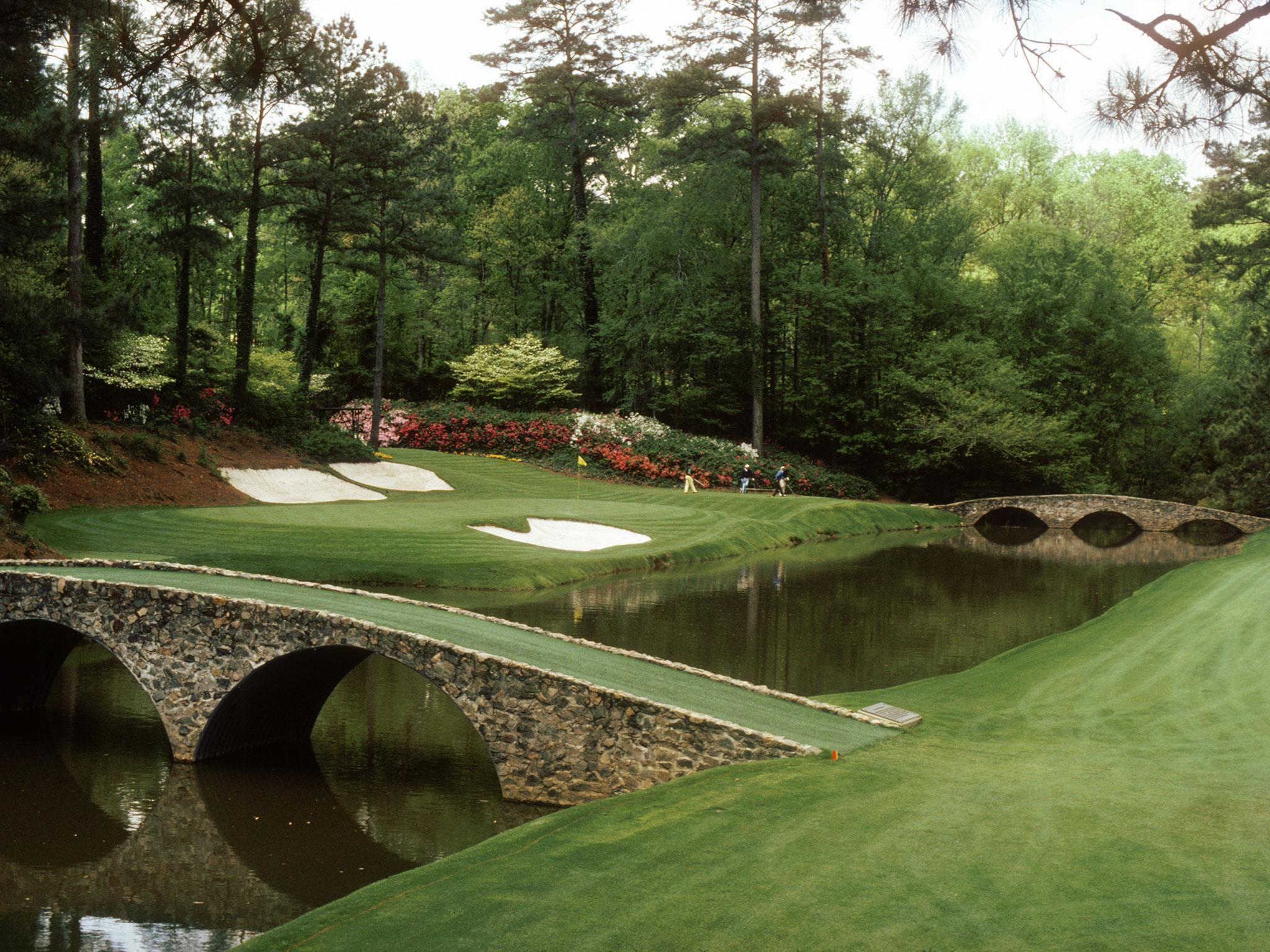
What can one say about arguably the most famous par-3 in the world?
Scientists have studied how a 155-yard hole can destroy so many scorecards.
Wind is a major factor but Rae’s creek and three cruelly well-positioned bunkers make it essential for players to land the ball on the putting surface.
This hole’s difficulty is well illustrated by Greg Norman’s 1996 collapse after his final round tee shot rolled back into the creek.
However it is Jordan Spieth’s meltdown 20 years later in the final round of the 2016 Masters when he threw away his lead with a quadruple bogey at Golden Bell.
It is a hole to play safe and avoid getting scarred.
Hole 13 (Azalea)
Par 5
510 Yards
Ranking: 17
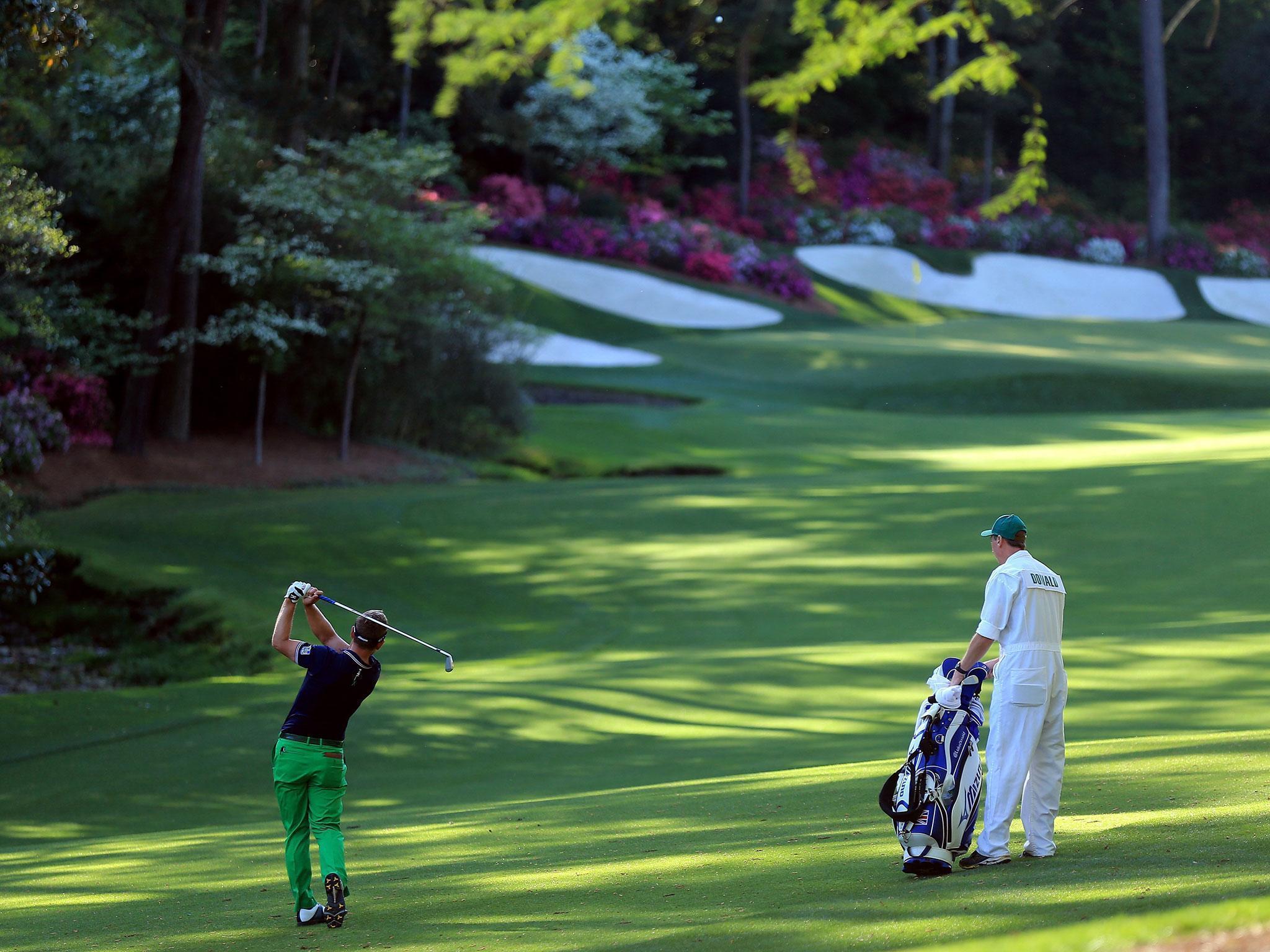
The inspiration for the naming of 2017 Masters champ Sergio Garcia’s daughter, the final hole of amen corner is the gentlest.
Rae’s creek guards the left edge of the fairway all the way along this dog-leg left and acts as a moat around the green.
There are also four bunkers behind the putting surface in case players go adding extra pressure when chipping towards a water hazard.
This is a definite birdie hole that, off the tee, most players will attempt to either cut off the corner with a driver or draw the ball around.
Hole 14 (Chinese Fir)
Par 4
440 Yards
Ranking: 8
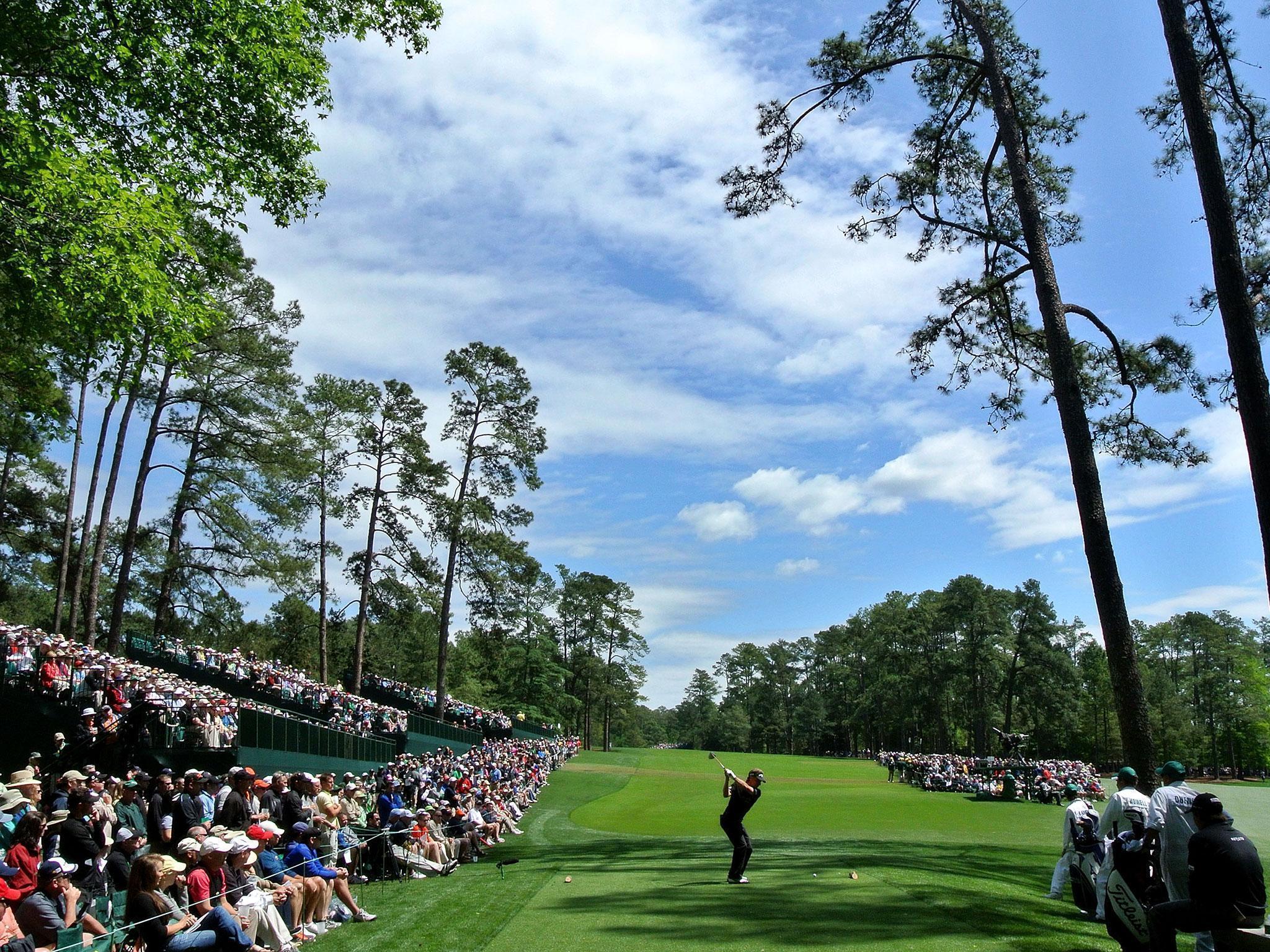
The slightest of a dog-leg left – this is the only hole on the course without a bunker.
Having a natural draw to your shot or a left-hander’s fade will help cut off the bend.
The main defence of this hole is a two-tier green which can leave the best players with impossibly long or bogey putts – it has no need of bunkers to bare its teeth.
Hole 15 (Firethorn)
Par 5
530 Yards
Ranking: 18
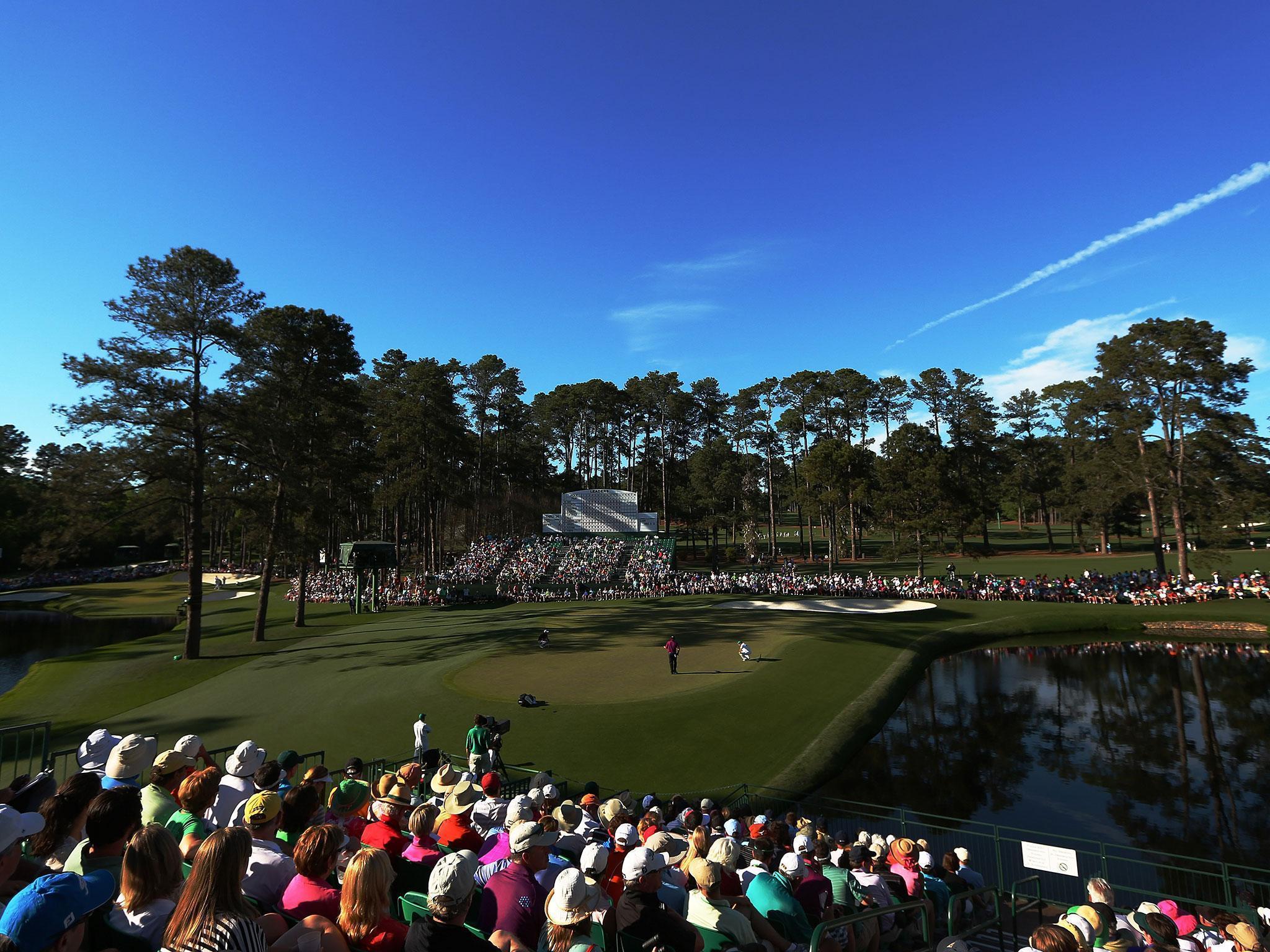
Reachable in two – this is a birdie and eagle opportunity.
Players will need to avoid hitting their driver left and being blocked out by trees but otherwise this is an opportunity to pick to up a round after a bruising Amen corner.
However, one cannot forget the green is protected by water in front, a bunker to the right with three pine trees and more water behind. There is no easy hole at the Masters – especially for players feeling the pressure.
Hole 16 (Redbud)
Par 3
170 Yards
Ranking: 10
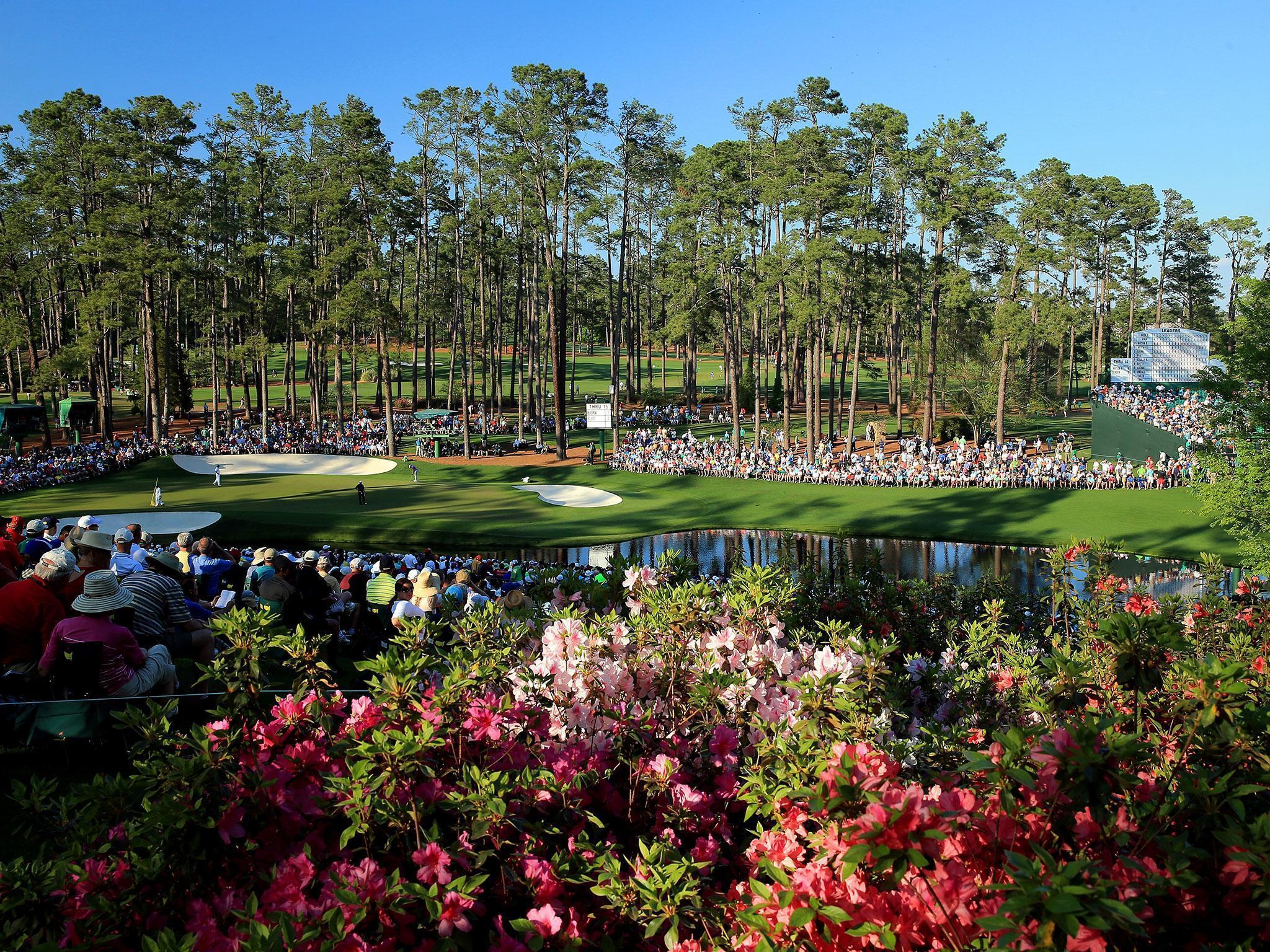
Played entirely over water – this par-3 green is also protected by three mind-reading bunkers.
Pin positions can force a player to consider if they are going for birdie or aiming for a safety par. Guts or glory moment.
Two strong memories reside at Redburn, Louis Oosthuizen’s hole in one in 2016 and of course Tiger Wood’s chip in 2005 with the ball slowly dropping into the cup – real masters magic.
Hole 17 (Nandina)
Par 4
440 Yards
Ranking: 9

Due to irrevocable damage caused by a 2010 ice-storm, the iconic Eisenhower tree that jutted out on the left hand side the fairway was removed – revealing the penultimate hole to be a straight uphill hole.
The green is protected by two bunkers with wise players aiming to land over the front right sand trap in the centre of the putting surface.
Hole 18 (Holly)
Par 4
465 Yards
Ranking: 7
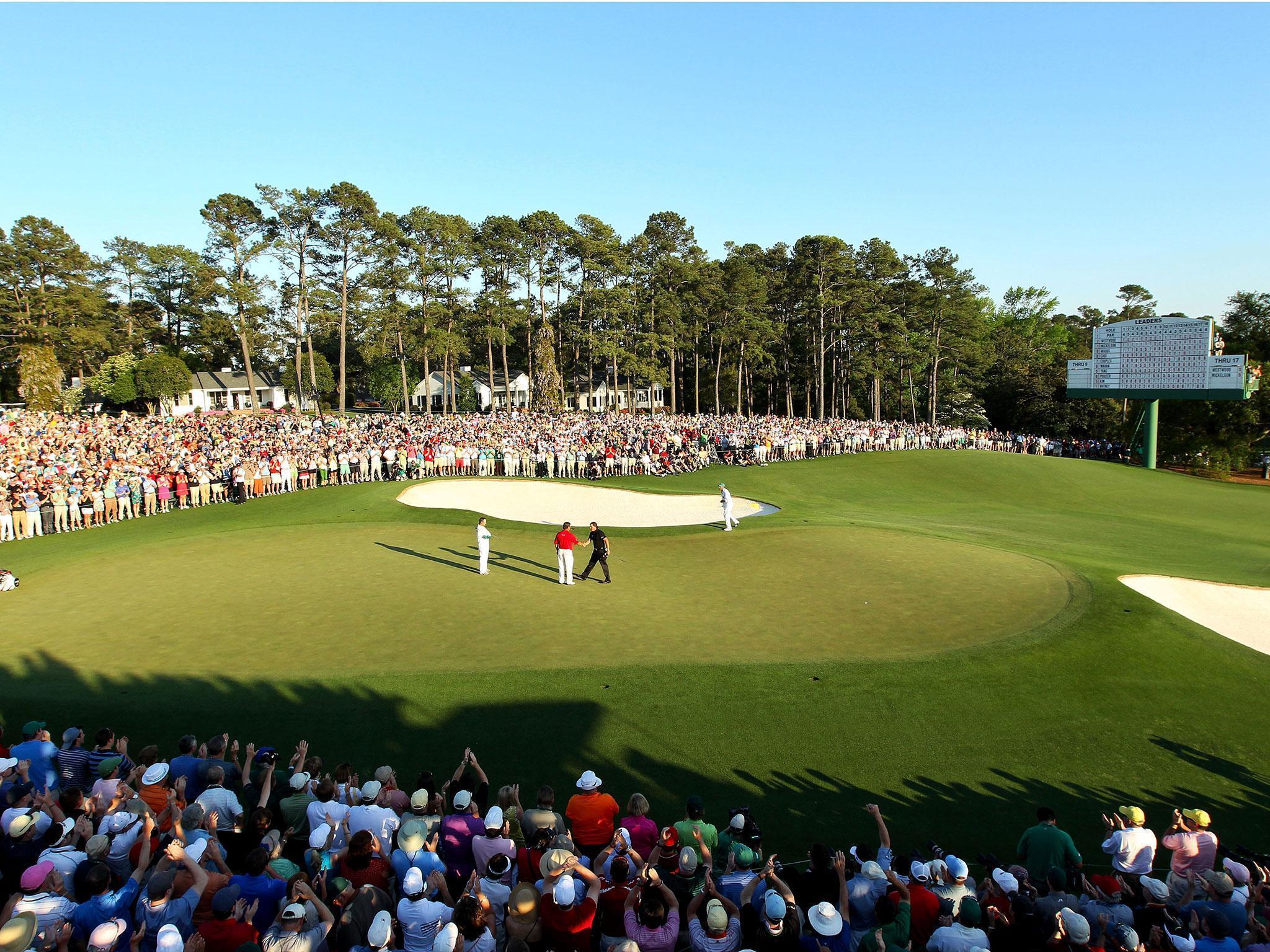
This is by no means a relaxed finishing hole – the 18th is an uphill dog-leg right marked by bunkers at the apex of the corner.
Like many holes around the course – wind dictate club selection with players always looking to land short of those fairway bunkers.
The terraced green is protected by two large bunkers - just to add to the fun.
Join our commenting forum
Join thought-provoking conversations, follow other Independent readers and see their replies
Comments